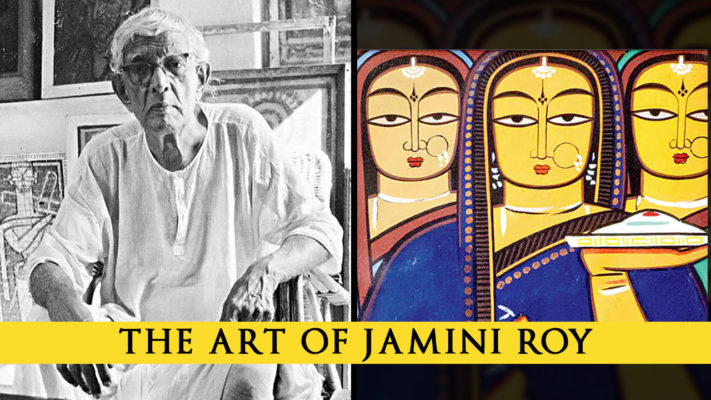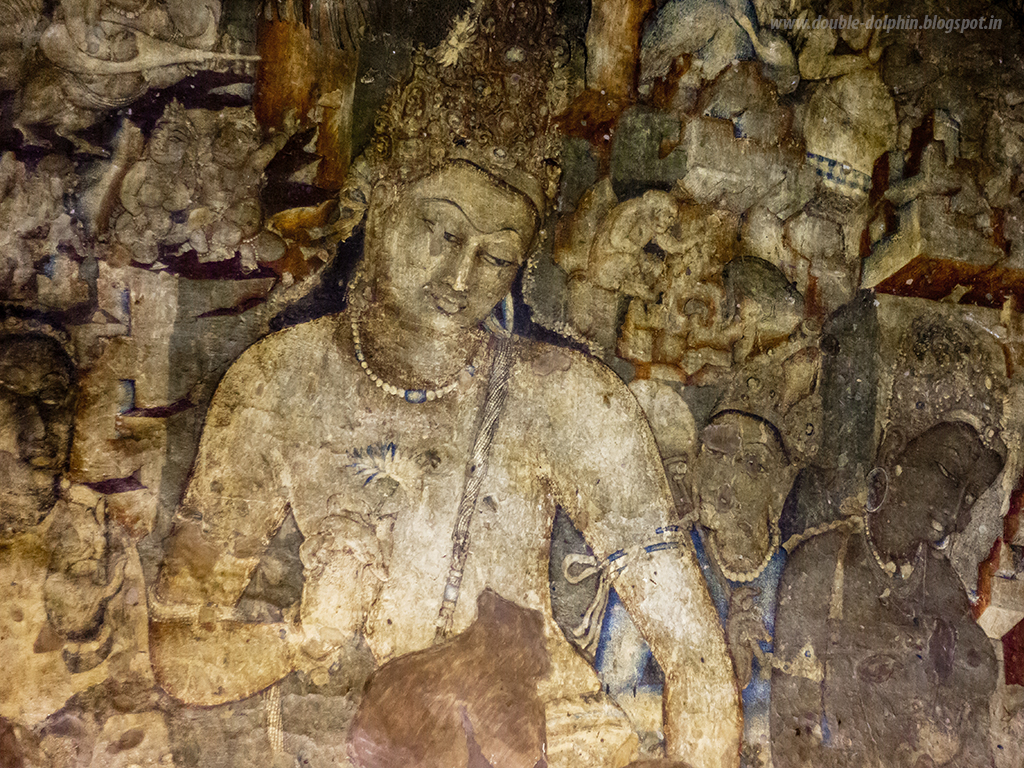
India- An Abode Of Magnificent Art
Sublime – if I had to describe Indian art and architecture in just a word, this would be it. India has been an abode to a great lineage of artists and sculptors, who have wowed our visual senses through their powerful depiction since ages immemorial. Take for example the awe-inspiring sculptures of the Ajanta and Ellora caves or the spectacular Tanjavur temples or the bejewelled Rajasthani castles and forts. And there are the baffling paintings of Rabindranath Tagore, Abanindranath Tagore, MF Hussain, Raja Ravi Varma, SH Raza – the list never ends. Their work transports you to a parallel universe – a universe that is complete with myriad hues and magnificent trance.

Like all forms of arts, Indian art has also transcended through many stages. The one which has left a lasting impact on me personally is modern Indian art, whose connoisseurs are the likes of Rabindranath Tagore, Abanindranath Tagore, Raja Ravi Verma – and the list never ends. However, if I was given the task to crown one artist as ‘timeless’, it would definitely be Jamini Roy – the maverick who unfurled the bright aspect of Bengali folk art to the world.
The Patua Who Became The Flag-bearer Of Modern Indian Art
Born in an obscure little village in Bengal’s Bankura district in 1887 to a middle-class landlord, Jamini Roy can be said to have been privileged enough to have great access to artists and great works of art from an early age. One of the brightest pupils of Abanindranath Tagore himself, Jamini Roy’s innate sense of art and colours can safely be said to have been imbibed from the patachitra culture of Bankura – an art form that the Bengali district is famous for.
Before beginning a discussion about Jamini Roy, it is important to know about Bankura, for the place left a lasting impression on young Jamini’s mind. Bankura is essentially one of the most beautiful and fertile places in Bengal. Depicted as a land of red soil, lush green forests, and baul, Bankura also boasts of a rich heritage of art. Young Jamini was mesmerized by it. In fact, it won’t be wrong to say that his first ever art teachers were the village craftsmen, whose strokes of bold colours picturing innately cultural themes filled the young lad’s mind with impeccable strokes of fulfilment and eagerness to learn more.
It is always said that the lessons learnt in childhood are never forgotten. As one may know, Jamini Roy’s idea about modern art always remained rooted in traditions – the inherent Bengali tradition of folk art, the patachitra. His style of art is often regarded as the perfect marriage between tradition and modern – a unique style that prompted him to hail himself more as a patua than an artist.
The Person Who Embraced Bengali Folk Art Ahead Of European Styles
Hailing from a prominent Bengali middle-class family, it was seemingly easier for young Jamini to pursue art. He was around 16 years old when his father sent him to learn more about painting from the prestigious Government College of Art in Calcutta. During those times, Abanindranath Tagore – the founder of Bengal School of Art – was the college’s Principal, who later went on to become a great influence for young Jamini.
At the Government School of Art, Jamini was taught to learn painting pertaining to the prevalent academic traditions of drawing classical nudes and oil painting. He was exposed to the brighter aspect of European School of Art and the avant-garde Bengali School of Art. He mastered the craft and received his diploma from the college in 1908.
He became a commissioned painter and a famous personality within a short time. It was then that he realized the futility of modern European art envisaging from an Indian perspective. He unlearned all his credentials and started afresh, drawing inspiration from folklore and traditions that were rooted in traditions despite sheer poverty. The Kalighat Pat intrigued him the most, a style of art that uses bold sweeping art strokes. And, thus was born the Jamini Roy, whom we all know today as one of the pioneers of modern Indian art.
The Uniqueness Of Jamini Roy

Despite being a student of the prestigious Government School of Art, Jamini Roy’s road to success was topsy-turvy. This was mainly because of his utter dismay with the European School of Art, in which he was trained as an artist. It was also not easy for a renowned artist to unlearn every academic discipline he was trained into, in a quest to find his own style – yet the artist in him could not come to terms with doing something he did not find freedom and happiness in.
Jamini Roy’s underlying quest behind this change of style was manifested by three ideas – firstly, to capture the simplicity of life embodied by the Bengali villagers; secondly, to make art accessible and visibly “understandable” to even common people, and thirdly, to carve out a niche for him in the universe of great Indian artists.
Within a small span of time, he succeeded in making his presence felt in the lives and homes of every modern Indian family. A glimpse of his art was enough for even a layman to identify his art – such was the uniqueness of this master artist. At a time, when the entire country was veering towards expressionist art, Roy was inching towards carving out his own style that made use of bold sweeping brushstrokes and vivid strong hues. He detested the three-dimensional painting that was slowly making its way into Indian art. Rather, he stuck to painting 2D images to get rid of any dimensions from his artwork. As for his colours, Roy always stuck to the basic seven vivid yet earthy hues – Indian red, yellow ochre, cadmium green, vermillion, grey, blue and white. Epic myths and folk cults are the tropes one may come across more often in his artwork – tropes which were almost written off from the avant-garde art of those times. Among his famous artwork inspired from Indian tradition are ‘Yashoda and Krishna’ and ‘Krishna and Balaram’, and among paintings inspired by the innately Bengali culture and thoughts, my favourite would undoubtedly be the ‘Cat with Prawn’.
Roy was always the ostracized painter, if we may audaciously say so. Unlike most painters of all times and ages, there was a time when he gave up painting on canvas or papers and switched to indigenous surfaces such as lime-coated wood, woven mats and even pieces of cloth – surfaces which had been prevalent among the folk artists of Bengal since times immemorial.
His Art And Times

Jamini Roy may have been one of the living legends during his times, but surprisingly he remained untouched by all the name and fame he garnered worldwide. Out of the 20,000 works of art he painted in his lifetime, there was rarely any painting that bore the price tag of more than Rs 350. And, today, his paintings are not only found in the households of art connoisseurs in India but also across the globe. In fact, it may just be safe to say that the replicas of his artworks are among the most-sold ones across India.
Roy received great accolades from across the world for his art. In 1934, he received the Viceroy’s Gold Medal in an all India exhibition for one of his work. He was also bestowed with the honour of Padma Bhushan in 1954 by the Government of India while, in the next year, Roy was made the first Fellow of the Lalit Kala Akademi, India’s National Academy of Art. In 1976, the Archaeological Survey of India declared his works among the “Nine Masters” whose work, to be henceforth considered “to be art treasures, having regard to their artistic and aesthetic value”, thus crowning him as one of the foremost artists India has ever had














